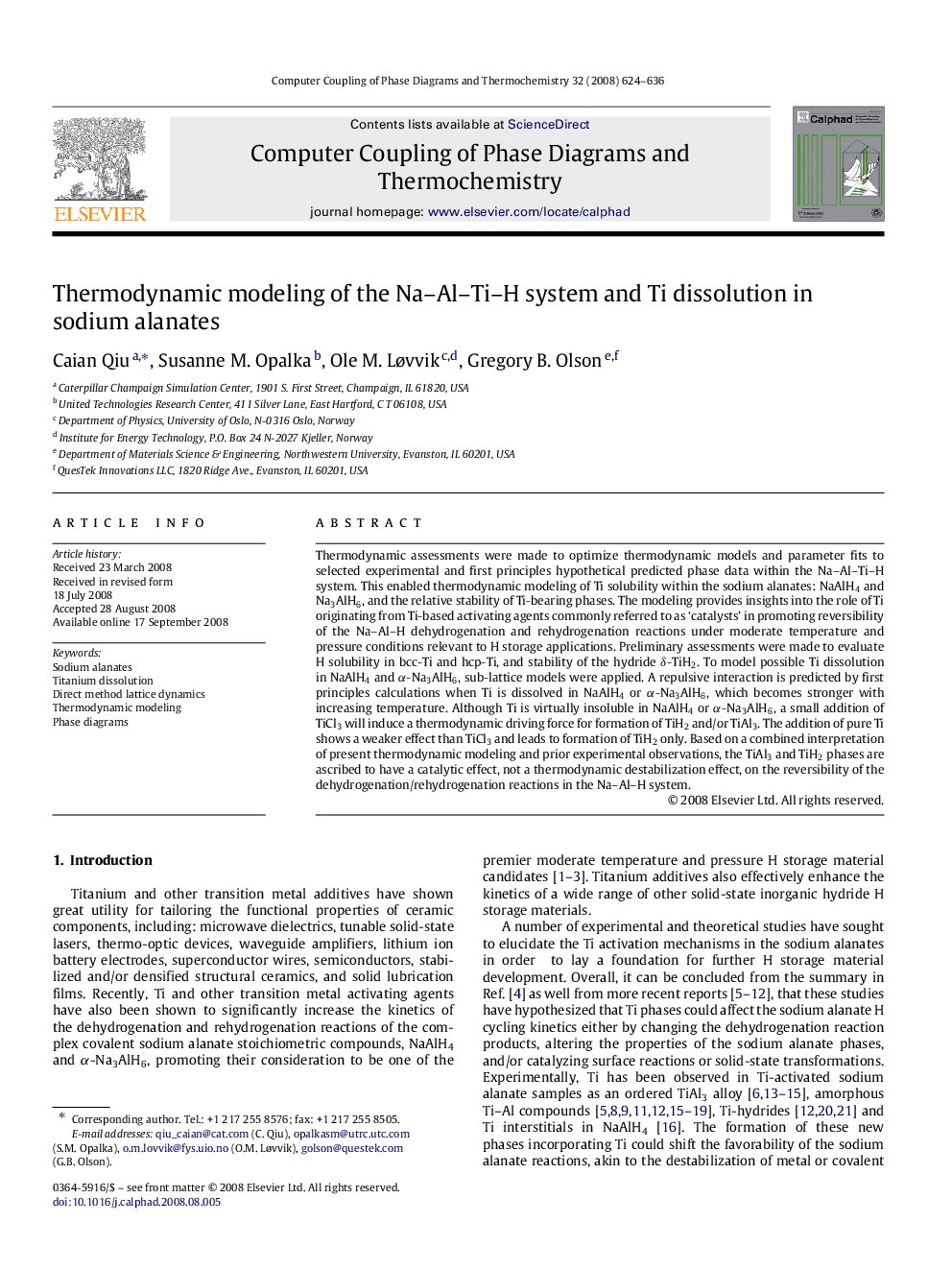| Article ID | Journal | Published Year | Pages | File Type |
|---|---|---|---|---|
| 1559456 | Calphad | 2008 | 13 Pages |
Thermodynamic assessments were made to optimize thermodynamic models and parameter fits to selected experimental and first principles hypothetical predicted phase data within the Na–Al–Ti–H system. This enabled thermodynamic modeling of Ti solubility within the sodium alanates: NaAlH4 and Na3AlH6, and the relative stability of Ti-bearing phases. The modeling provides insights into the role of Ti originating from Ti-based activating agents commonly referred to as ‘catalysts’ in promoting reversibility of the Na–Al–H dehydrogenation and rehydrogenation reactions under moderate temperature and pressure conditions relevant to H storage applications. Preliminary assessments were made to evaluate H solubility in bcc-Ti and hcp-Ti, and stability of the hydride δ-TiH2. To model possible Ti dissolution in NaAlH4 and α-Na3AlH6, sub-lattice models were applied. A repulsive interaction is predicted by first principles calculations when Ti is dissolved in NaAlH4 or α-Na3AlH6, which becomes stronger with increasing temperature. Although Ti is virtually insoluble in NaAlH4 or α-Na3AlH6, a small addition of TiCl3 will induce a thermodynamic driving force for formation of TiH2 and/or TiAl3. The addition of pure Ti shows a weaker effect than TiCl3 and leads to formation of TiH2 only. Based on a combined interpretation of present thermodynamic modeling and prior experimental observations, the TiAl3 and TiH2 phases are ascribed to have a catalytic effect, not a thermodynamic destabilization effect, on the reversibility of the dehydrogenation/rehydrogenation reactions in the Na–Al–H system.
